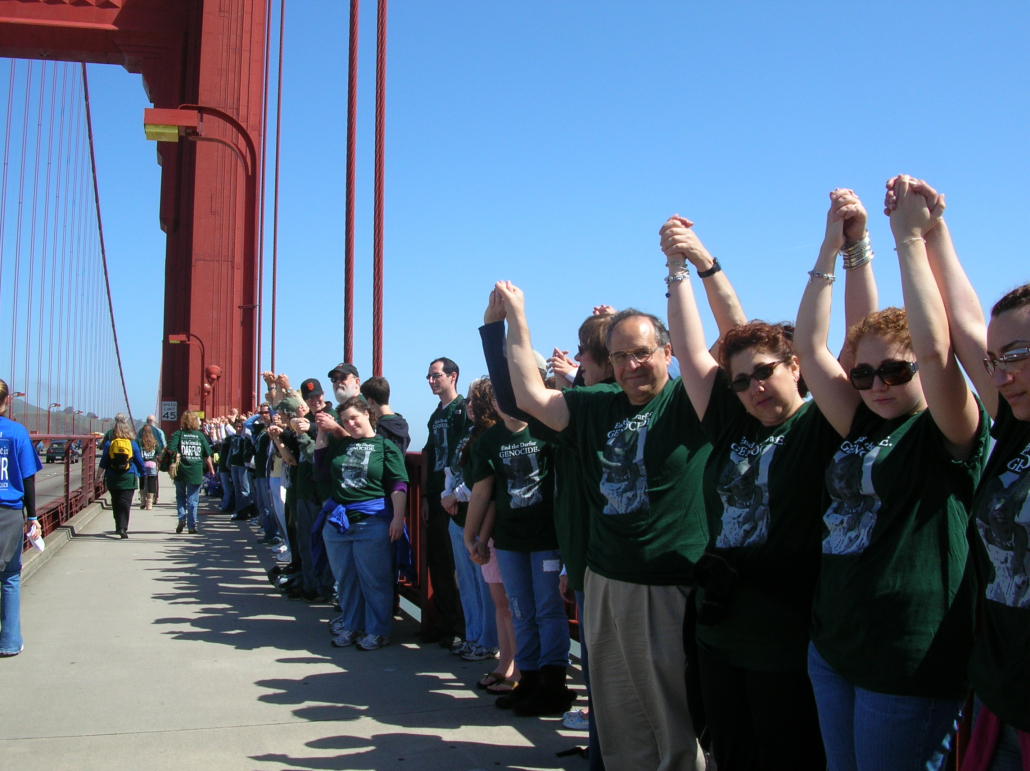Armodoxy: What’s it all about?
Armodoxy is the mystical and spiritual “weapon” that has delivered the Armenian nation and has brought tranquility to the souls of a people.
ARMODOXY
Armodoxy is the ancient and mystical faith of the Armenian people, polished up for today. Coined by Fr. Vazken Movsesian, the term refers to understanding Armenian Orthodoxy as a system to live by today.
For the past six millennia, the Armenian people have inhabited the land at the base of Mt. Ararat, at the “Cradle of Civilization.” Armenia is a war-torn, land-locked country sitting at the crossroads of three continents, Europe, Asia and Africa. Armenians have endured mass destruction of their land, homes and lives by barbarians, conquerors and most recently even experienced Genocide (1915) at the hands of the Ottoman Turks. Despite countless perils, natural disasters, atrocities and suffering, without military strategy or large military presence the Armenian story is one of survival, rebirth and growth. Armodoxy is the mystical and spiritual “weapon” that has delivered this nation and has brought tranquility to the souls of a people. Armodoxy holds the key components of love, faith and hope for all of humanity.
Armodoxy is the power of the spirit in transforming the profane and establishing peace – a peace for the soul with applications for the world. Armodoxy is the grounding philosophy of the In His Shoes movement and is accessed through the teachings and programs of the IHS organization.
Caption – Visual representation of Armodxy: Mt. Ararat from the tarmac at Zvartnots International Airport.
SAMPLING ARMODOXY
You’re on the 15th floor of a high rise building. You press the “down” button on the elevator. The door opens and you enter the empty elevator. The elevator stops on the 12th, 9th and 5th floors and picks up more passengers. When you arrive to the ground floor, the door opens. Those who entered on the 5th floor exit first, then the others and you are the last one to walk out. The first shall be last and the last shall be first. (Matt. 20-16)
Jesus used metaphors to teach the most complicated and profound truths of the universe to people of our planet and our age. “Unless a grain of wheat dies…” (John 12), “I am the true vine…” (John 15). He used imagery that spoke to the common man of the time.
The message of Christ is timeless. The message comes by words and language that take shape in a world today. We may not understand grains of wheat or vineyards, or the metaphor of a Samaritan. And so, no doubt that if the scriptures were recording Jesus speaking to us today, we might hear the metaphors of an elevator, a calculator or perhaps a piano. Certainly, the story of the “Good Samaritan” (Luke 10) would be adapted to people who might be at odds with one another. To make the Samaritan a black man who assists a white man who has been assaulted and left for dead would bring the point home much more distinctly to racists or supremacists. Having the hero be a Palestinian who tends to an Israeli, or a Turk who helps an Armenian, would drive the point home emphatically that we are invited to seek the “neighbor” in everyone, even a foreigner or a so-called enemy.
Armenian Orthodoxy is the oldest Christian tradition on earth. It has withstood the test of time, the ravage of attacks and has delivered a simple message of love through Christ. Armodoxy is the challenge to bring that message home to people of the 21st century while maintaining the integrity of the Christian Gospel of faith, hope and love.
And behold, a certain lawyer stood up and asked Jesus, “And who is my neighbor?” Then Jesus answered and said: “A certain man went down from Jerusalem to Jericho, and fell among thieves, who stripped him of his clothing, wounded him, and departed, leaving him half dead. Now by chance a certain priest came down that road. And when he saw him, he passed by on the other side. Likewise a Levite, when he arrived at the place, came and looked, and passed by on the other side. But a certain Samaritan, as he journeyed, came where he was. And when he saw him, he had compassion. So he went to him and bandaged his wounds, pouring on oil and wine; and he set him on his own animal, brought him to an inn, and took care of him. On the next day, when he departed, he took out two denarii, gave them to the innkeeper, and said to him, ‘Take care of him; and whatever more you spend, when I come again, I will repay you.’ So which of these three do you think was neighbor to him who fell among the thieves?”
And he said, “He who showed mercy on him.”
Then Jesus said to him, “Go and do likewise.”
-Luke 10
Visitors this month.




